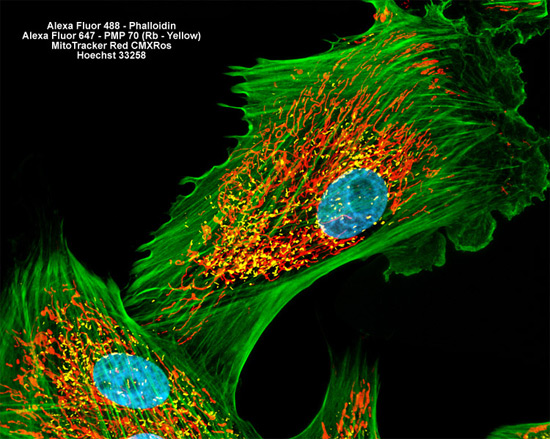Fibroblasts were for many years considered essentially to serve as scaffolding for other cells with more important functions. Most modern research, however, indicates that the cells can act in significant ways and possess the potential to transform into more specific cell types, such as myofibroblasts or lipofibroblasts, depending on their specific surface markers.
Grey Fox Lung Fibroblast Cells

A culture of fox lung fibroblasts (shown above) was treated with rabbit anti-PMP 70 (peroxisomal membrane protein) primary antibodies, followed by goat anti-rabbit secondary antibodies conjugated to Alexa Fluor 647 (pseudocolored yellow) to target peroxisomes. Additionally, in order to visualize the relationship between the mitochondrial and filamentous actin networks, the cells were labeled with MitoTracker Red CMXRos and Alexa Fluor 488 conjugated to phalloidin. Hoechst 33258 was employed to counterstain cell nuclei. Images were recorded in grayscale with a Hamamatsu ORCA AG camera system coupled to a ZEISS Axio Imager microscope equipped with bandpass emission fluorescence filter optical blocks provided by Chroma and Semrock. During the processing stage, individual image channels were pseudocolored with RGB values corresponding to each of the fluorophore emission spectral profiles.



